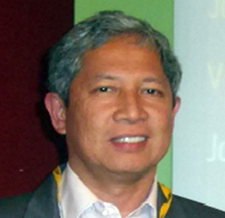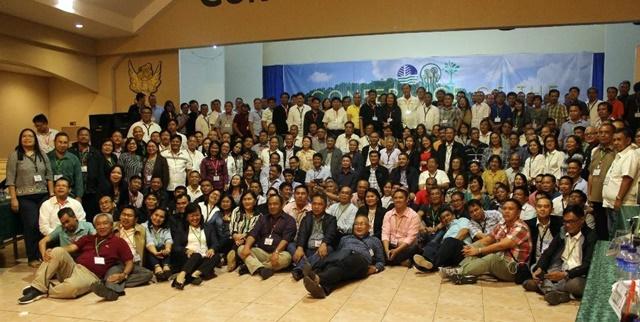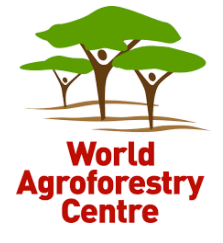Humans, Not Trees, Are the Solution for the Philippines
Without an effective government bureaucracy, the Philippines could not achieve its goals, says Marlo Mendoza, first director of the National Greening Program
by Rob Finlayson
While it has been recognized by the public health sector for a long time, rural development practitioners have only recently woken up to the idea that it is not the technical aspect of development projects that is the challenge but the human aspects.
If we want projects not only to do ‘good’ but also be ‘effective’, it is essential to identify psychological and social influences on behaviour and construct policies that work with these influences, rather than against them, according to a report by the World Bank Group. This would “require a more empirical and experimental approach to policy design. Because human decision making is so complicated, predicting how beneficiaries will respond to particular interventions is a challenge. The processes of devising and implementing development policy would benefit from richer diagnoses of behavioural drivers […] and early experimentation in program design that anticipates failures and creates feedback loops that allow practitioners to incrementally and continuously improve the design of interventions.”
Lessons such as these were well understood by Marlo D. Mendoza, now Associate Professor with the Department of Social Forestry and Forest Governance, College of Forestry and Natural Resources, University of the Philippines Los Baños, who was the first director of the Philippine National Greening Program (NGP), one of the world’s most ambitious countrywide reforestation programs. Its main goal was to plant 1.5 billion seedlings on 1.5 million hectares of public land from 2011–2016. During its implementation, the Philippines attained the fifth greatest annual gain in forest area from 2010 to 2015, according to the Food and Agriculture Organization of the United Nations. The NGP is now in its second phase, renamed the Enhanced National Greening Program. ICRAF is supporting the Philippine Government’s ambition of achieving greater accountability and transparency by developing a robust monitoring and evaluation framework that will support the eNGP into the future.
Early challenges
“We were already aware in 2011 that when we launched this new program the bureaucracy would approach it the way they had done with past programs,” said Mendoza. “Moving forward a massive program is a huge challenge if the bureaucracy is not aligned. The first two years were quite difficult because we didn’t have our direct command accepted by the bureaucracy. The implication was that the NGP was different from the ‘business as usual’ greening programs previously implemented by the Department of Environment and Natural Resources under several presidents. Mostly, exotic species for timber were planted in the past. However, for the NGP, there were different goals.
The NGP wasn’t intended just to establish forest cover but also to alleviate poverty, with a focus on the people’s organizations. The NGP had to have a positive impact on the lives of the people. It also had a biodiversity goal: no exotic species were to be planted in protected areas or protection forests. It was also a climate-change mitigation and adaptation program. And was to make the uplands productive and stable. These goals were not articulated in previous programs.
When the initial guidelines for the NGP had been finalized, the Secretary of the Department of Environment and Natural Resources insisted that they be launched with the President to add authority to the change of direction. Foresters had a bad reputation and associated low motivation, according to Mendoza. They were blamed for environmental disasters and citizens frowned upon the incentives needed for governmental officers to do ‘well’.
Partly in response to these issues, the Commission of Audit was appointed to carry out fiduciary supervision from the beginning of the NGP. To help with behaviour change, regional officials were required to sign legal documents for achieving the Program’s goals. If there were errors, administrative sanctions could be applied. Measures such as these in the design stage helped ensure success.
“After seven years, even with a, say, 50% survival rate, the impact is very big already,” said Mendoza. “Environmentally, many plantations are maturing and are being harvested. Domestic supply of locally grown timber has increased. In the ‘timber corridor’ of the Philippines, Agusan in Region 13, there was lots of planting with a high survival rate. The sawmills there have now been able to reduce their imports because there is so much local timber available in the form of short-rotation exotic species such as Albizia. There are people’s organizations now that are really making money. They only give a small amount to the government when they harvest. They are also trained in replanting as part of the program’s support through the Forest Management Bureau, the Ecosystems Research and Development Bureau, and the Biodiversity Management Bureau working together. The latter works in the protected zone. The FMB in the production zone. The Research Bureau provides support to both bureaux.”
Acting together
Bringing usually separate agencies together was a critical part of the success story. An informal technical working group was established with as many as 10 different agencies at any one time, including the Philippine Atmospheric, Geophysical and Astronomical Services Administration, Bureau of Soils and Water Management from the Department of Agriculture, Department of Agrarian Reform, Department of Agriculture, and the National Mapping Authority.
The aim of the group was to zone the entire Philippines to identify where to plant commodity species. For example, where would rubber be best suited? The zoning was based on climate, soil, elevation, road network, processing plants, and wind speed because of typhoons. The group was successful because of its close integration, converging resources and mandates.
“Government agencies tend to operate separately,” explained Mendoza. “Which is why problems arise. But if we work together we can do wonders. Just talking with each other already solves a lot of the problems.”
The NGP also made a point of planting only in tenured areas, not open access, because of past mistakes: no one would care for the trees in open access areas. Protected zones, such as national parks, biodiversity hotspots, climate-sensitive and disaster-prone areas, were only planted with indigenous species and no harvesting was permitted. Only in the production zone were exotics allowed although indigenous species were preferred.
Continuity
After two years, Mendoza received a new assignment: the president sent him to deal with illegal logging in protected forests. While he was also successful in his new post, the move highlights another issue facing long-term development in the Philippines: continuity of high-performing staff. People who perform well stand out and are often swiftly moved to new challenges, resulting in an interruption to the continuity of the program.
Nevertheless, the NGP continued and overcame many challenges, although many still remain, including some of those initially addressed by Mendoza, given that such challenges have a tendency to recur. This highlights the importance of a deep and extensive monitoring, reporting and verifying system, which is currently under development by ICRAF.
Regarding agroforestry’s role in the NGP, he noted that, “There were a lot of commodity ‘road maps’ for fruit trees because agroforestry was part of the initial design. The goals of the NGP could not be achieved through traditional forestry but only through agroforestry. We could probably rename the NGP as the National Social Forestry Program because the NGP is mostly associated in people’s minds just with planting trees whereas ‘social forestry’ means ‘agroforestry’.
The World Agroforestry Centre is one of the 15 members of the CGIAR, a global research partnership for a food-secure future. We thank all donors who support research in development through their contributions to the CGIAR Fund.





